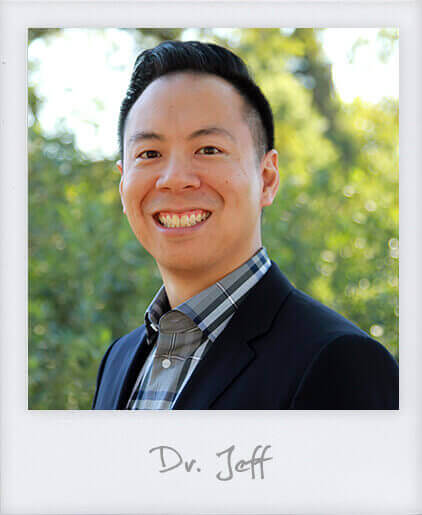
Patients at our El Dorado Hills orthodontic practice frequently ask about getting braces just on top teeth only, either because their bottom teeth are straight, or they feel like they’re not that visible so they don’t see the point.
Less commonly, someone will visit us who is interested in braces on the bottom teeth only. While what’s known as single arch treatment can be effective, there are a lot of factors that have to line up for this to be the case. That’s why my team and I take the time to evaluate your needs and concerns at Jeffrey Kwong Orthodontics. That said, this is an exciting time in Orthodontics, and with digital treatment planning options like Invisalign® and InBrace®, we have more options and ways to effectively handle treating one arch of teeth.
In this post, we’ll cover:
- What is single arch orthodontic treatment?
- When is single arch treatment effective?
- The risks of getting braces on the top teeth or bottom teeth only
Table of Contents
What is Single Arch Orthodontic Treatment?
Single arch or one-arch treatment involves using braces or Invisalign® on just the top teeth or just the bottom teeth, but not both. While some orthodontists will put braces on the top teeth first before moving onto the bottom teeth, or vice versa, that’s a little different and still involves eventually addressing both arches.
When an orthodontist opts for just top teeth braces or bottom teeth braces, they only do so after looking at the bite, or the relationship between the lower and upper teeth, because changing just one set of teeth will affect your “overbite.”
When is Single Arch Treatment Effective?
As we mentioned earlier, single arch treatment can be effective in certain instances.
- Since crooked teeth tend to shift forward once they’re straightened, if you have crowded lower teeth, straight upper teeth, and a significant overbite, which is when the top teeth overlap the bottom teeth to an excessive degree, getting braces on the bottom teeth only might work.
- Braces on the top teeth only could be effective if there is spacing between the upper teeth, you have an overbite, and you’re happy with how your bottom teeth look. Closing the spaces will have the opposite effect of straightening crowded teeth. It will move the teeth back, which could improve the overbite, while closing gaps.
- If your upper teeth are behind the bottom ones, as with an underbite, and you have crowded top teeth, single arch treatment may potentially improve the bite. Keep in mind, if the bite is okay in the back and just the front teeth are crowded, braces on the top teeth only will cause overjet teeth.
Sometimes, we can lessen this upper arch flaring by reducing the size of the upper teeth with what is known as air rotor stripping (ARS) or interproximal reduction (IPR). You might also hear me call this “manicuring” the sides of the teeth. Be aware that not everyone is a good candidate for these treatments though and the best way to find out if you are a candidate is to have your bite evaluated by an orthodontic specialist.
The Risks of Getting Braces on the Top Teeth or Bottom Teeth Only
Your smile isn’t just dependent on the position of your teeth. Your bite is actually a complicated relationship that involves your jaws as well. If your jaws are not balanced (e.g. one is larger or smaller than the other), that can definitely affect how well your teeth can fit together.
There are times when single arch orthodontic treatment may leave you with a worse bite, causing your front or back teeth to touch too hard (making your teeth more likely to break down or chip, or putting excess pressure on the bone and gums), or not touch at all (reducing function). The importance of an even bite is that it will help distribute everyday forces on the teeth evenly to prevent wearing of the teeth, and trauma to the teeth and gums. Our goal is always a beautiful smile with a healthy bite.
Additionally, when we get older, our bites tend to deepen and the front teeth overlap more, which leaves almost no space between the back of the top teeth and the front of the lower teeth. You need some clearance to align the bite, so you would have to reposition both the upper and lower arch, making getting braces on the top teeth only, or just the bottom teeth, impossible.
Another factor to consider is the way teeth move depending on their position. For example, as we said before, crowded teeth will move forward when straightened and teeth with spaces between them will move backwards. If you’re suffering from an underbite and you just straighten crooked bottom teeth, it will make it worse.
Teeth may appear straighter but the bite will be off (FYI: This is the same problem you’ll see with those clear aligners you can order online; they only straighten the teeth, but don’t fix the bite!). If your top teeth are the ones that are crowded and you already have an excessive overbite, addressing them alone will cause the overbite to grow larger throughout treatment.
Is Treatment With Bottom or Top Braces Only Right for Me?
As you can see, a lot goes into determining whether or not getting braces just on top teeth or bottom teeth only is a possibility. In order to find out for certain if single arch treatment will work in your case, you’ll have to visit our El Dorado Hills & Sacramento orthodontist so they can evaluate your bite.
If you’re interested in clear braces, metal braces, InBrace® hidden braces or Invisalign in El Dorado Hills, contact Jeffrey Kwong Orthodontics for a free consultation. I’ll be able to determine which course of treatment will produce the best possible results for your smile. #SmileMoreLiveMore

